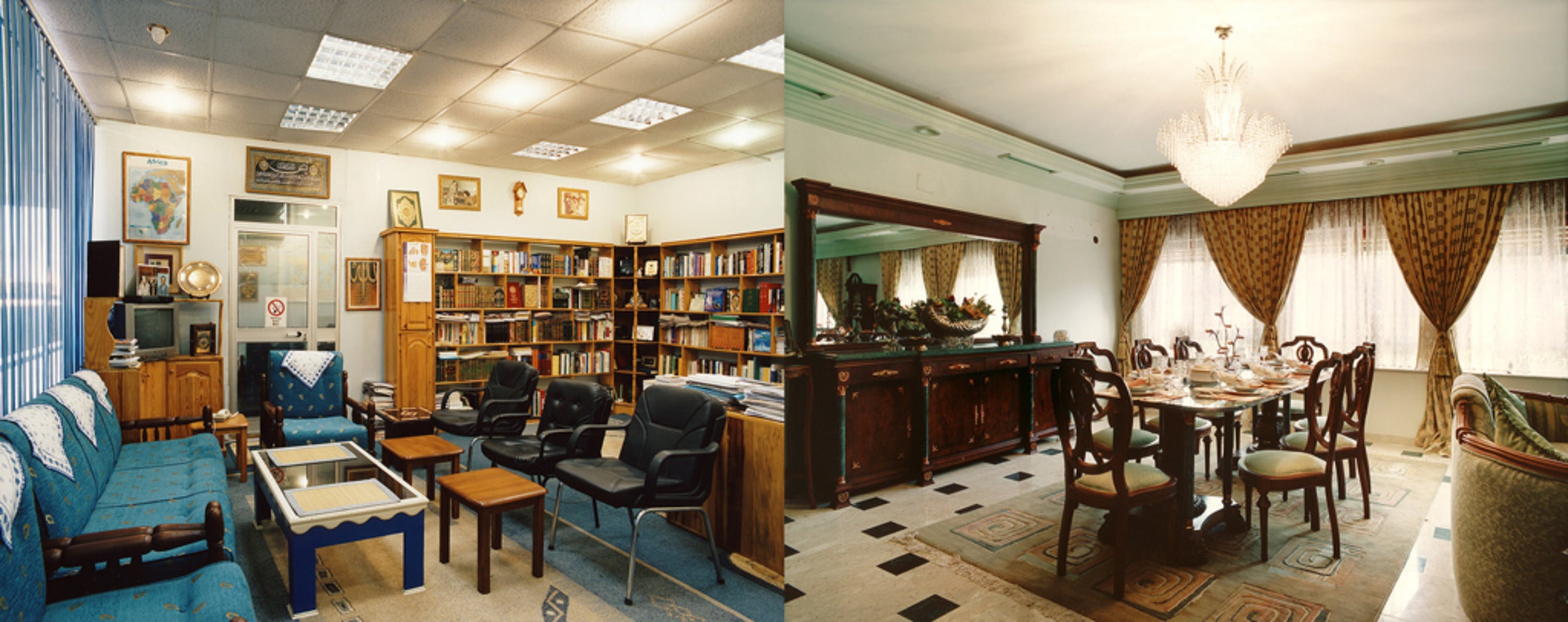Widad Yagoub Ibrahim
Vice Chairperson and Managing Director, Bee Petroleum Company
Arab Domains
Khartoum, Sudan
26 May 2005 (left), 28 May 2005 (right)
“For diverse reasons, and with the differences entailed by poetic shadings, this is eulogized space,” renowned French philosopher Gaston Bachelard wrote in his seminal book The Poetics of Space.
Vice Chairperson and Managing Director, Bee Petroleum Company
Arab Domains
Khartoum, Sudan
26 May 2005 (left), 28 May 2005 (right)
“For diverse reasons, and with the differences entailed by poetic shadings, this is eulogized space,” renowned French philosopher Gaston Bachelard wrote in his seminal book The Poetics of Space.

Her Excellency Lujaina Mohsin Darwish
Joint Deputy Managing Director, Mohsin Haider Darwish LLC
Arab Domains
Muscat, Sultanate of Oman
13 April 2006
Jacqueline Hassink’s project, Arab Domains, was short-listed for the prestigious Prix Pictet. In this body of work, the photos present boardroom tables of Arab international companies juxtaposed as diptychs with the home dining room tables of executives from these companies.
Joint Deputy Managing Director, Mohsin Haider Darwish LLC
Arab Domains
Muscat, Sultanate of Oman
13 April 2006
Jacqueline Hassink’s project, Arab Domains, was short-listed for the prestigious Prix Pictet. In this body of work, the photos present boardroom tables of Arab international companies juxtaposed as diptychs with the home dining room tables of executives from these companies.


Mouna Bassaleh
Owner and President, Multipharma Scientific Office
Arab Domains
Damascus, Syria
14 February 2005
All of the 36 senior executives profiled are women of Arab nationality. They hail from 18 Arab countries: Algeria, Bahrain, Egypt, Iraq, Jordan, Kuwait, Lebanon, Libya, Morocco, Oman, Palestinian Territories, Qatar, Saudi Arabia, Sudan, Syria, Tunisia, United Arab Emirates, and Yemen. While the compositions are void of people, these photographs are decidedly about human nature. An undercurrent flows through the collection of images, carrying with it all the symbolism and iconography the table embodies.
Owner and President, Multipharma Scientific Office
Arab Domains
Damascus, Syria
14 February 2005
All of the 36 senior executives profiled are women of Arab nationality. They hail from 18 Arab countries: Algeria, Bahrain, Egypt, Iraq, Jordan, Kuwait, Lebanon, Libya, Morocco, Oman, Palestinian Territories, Qatar, Saudi Arabia, Sudan, Syria, Tunisia, United Arab Emirates, and Yemen. While the compositions are void of people, these photographs are decidedly about human nature. An undercurrent flows through the collection of images, carrying with it all the symbolism and iconography the table embodies.
While the compositions are void of people, these photographs are decidedly about human nature.
Elham M. Zeadat
General Manager and Owner, BLOOM Dead Sea Gift Enterprise
Arab Domains
Amman, Jordan
11 February 2005
And to this end, “the aesthetics of hidden things,” as Bachelard coined, those intangibles that separate intimate, lived-in spaces from the formal work environment of an office, are discussed in Arab Domains. The abstracts — human nature, memory, hopes — brought to any table by those convened there thread together the essence of purpose and intention.
General Manager and Owner, BLOOM Dead Sea Gift Enterprise
Arab Domains
Amman, Jordan
11 February 2005
And to this end, “the aesthetics of hidden things,” as Bachelard coined, those intangibles that separate intimate, lived-in spaces from the formal work environment of an office, are discussed in Arab Domains. The abstracts — human nature, memory, hopes — brought to any table by those convened there thread together the essence of purpose and intention.
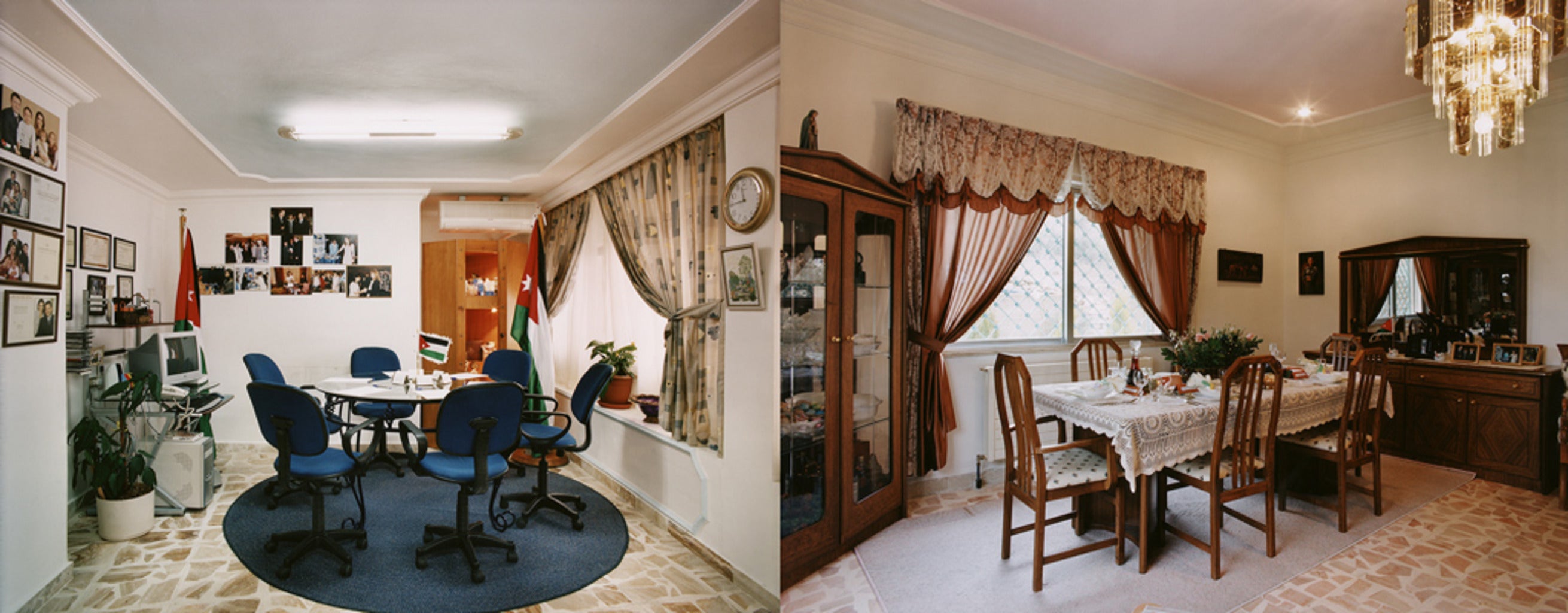
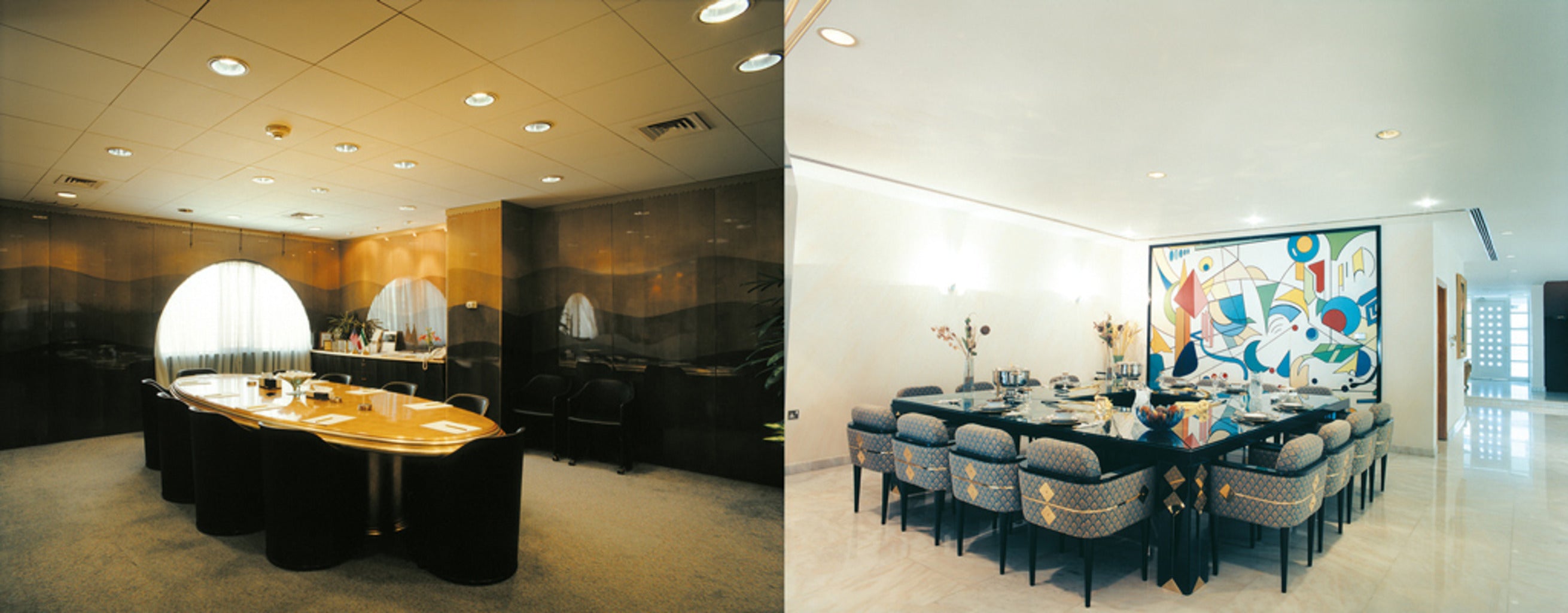
Maha Khaled Al-Ghunaim
Vice Chairman and Managing Director, Global Investment House
Arab Domains
Kuwait City, Kuwait
22 May 2005
In a business environment, the human aspect is sometimes secondary to the economic or market agendas. But people and human nature underlie any agenda item no matter how pragmatic or honed, and Hassink subtly reminds the viewer of this, plus the larger cultural and gender messages unique to her geographic focus in this project.
Vice Chairman and Managing Director, Global Investment House
Arab Domains
Kuwait City, Kuwait
22 May 2005
In a business environment, the human aspect is sometimes secondary to the economic or market agendas. But people and human nature underlie any agenda item no matter how pragmatic or honed, and Hassink subtly reminds the viewer of this, plus the larger cultural and gender messages unique to her geographic focus in this project.
Hessa Abdul Rahman Al-Oun
Chairman of 5 companies; a.o. Al-bidaia Company for Trading & Industry and
the First Female Industrial City Center
Arab Domains
Jeddah, Saudi Arabia
9 November 2005 (left), 11 November 2005 (right)
Chairman of 5 companies; a.o. Al-bidaia Company for Trading & Industry and
the First Female Industrial City Center
Arab Domains
Jeddah, Saudi Arabia
9 November 2005 (left), 11 November 2005 (right)

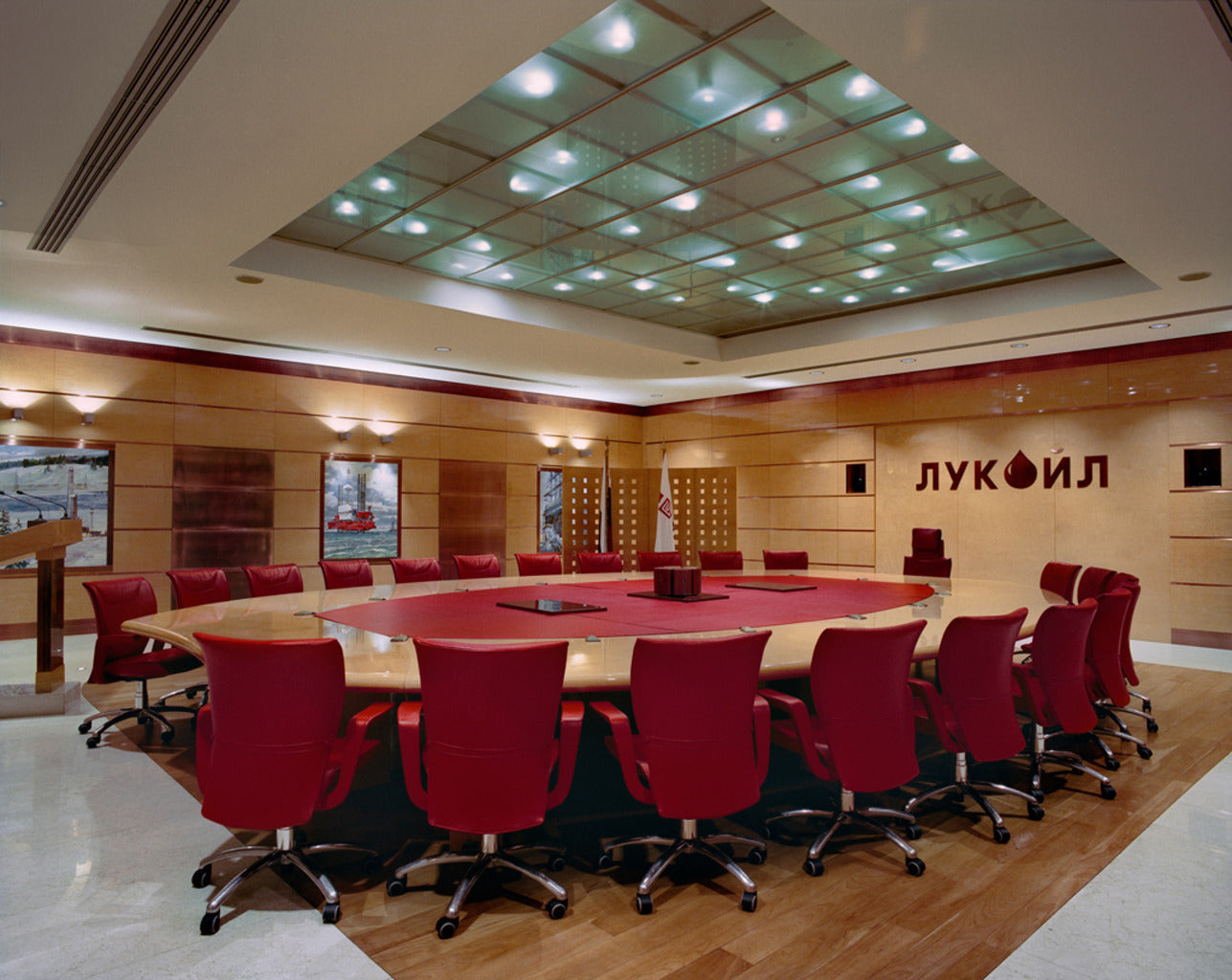
“It has been a challenge to grasp and understand the position of powerful Arab businesswomen.”
“It has been a challenge to grasp and understand the position of powerful Arab businesswomen. The project focuses on the corporate world because it is one of the most challenging environments for women to succeed [in],” Hassink writes. “Since 1993, I have been intrigued by the role that large corporations play in our society.”
The Table of Power 2
Moscow, Russia
17 February 2010
“I am interested in the forces that rule these corporations, particularly their CEOs,” Hassink explains. “In the projects The Table of Power (1993–1995), Banks (1995–1996), Female Power Stations: Queen Bees (1996–2000), and Mindscapes (1998–2003), I mapped the global economy by focusing on top CEOs and large corporations like banks and multinationals. I was looking at the identity of economic power.”
Hassink elaborates: “Arab Domains is a follow-up to Female Power Stations: Queen Bees, a project in which I portrayed 15 women who in 1997 were senior executives of Global Fortune 500 corporations in the United States, Europe, and Japan. These executives contributed to the project by permitting me to photograph their office boardroom tables and home dining room tables.”


The meeting table of the Board of Directors of ThyssenKrupp
The Table of Power 2
Essen, Germany
22 March 2011
The Table of Power 2
Essen, Germany
22 March 2011
"Kings do not touch doors,"
Francis Ponge wrote. But they do run hands across
a table; they do rest palms on the surface.

“Kings do not touch doors,” Francis Ponge wrote. But they do run hands across a table; they do rest palms on the surface, as these powerful women do in their boardrooms and while dining in their homes. The synchronicity of work and rest, the ironic parallels of gesture along with the distinguishing functions of purpose these tables imply, inform Hassink’s photographs with depth and a lingering consideration of how we all blend the hours and responsibilities of a day — on an individual as well as an international corporate level..
Hosna Mohamed Rachid
Chairman, Rachid Mashreq Group
Arab Domains
Alexandria, Egypt
20 September 2006 (left), 21 September 2006 (right)
“In the West, the media has expressed such a negative stereotypical image of Arab women that I was driven to create a project that could show a different and unknown face of Arab women,” Hassink relays. “I was searching for more complexity and variation on this topic, and hope the project can be a catalyst that shows a more positive image of the Arab world than has been shown in the media over the last years.”
Hosna Mohamed Rachid
Chairman, Rachid Mashreq Group
Arab Domains
Alexandria, Egypt
20 September 2006 (left), 21 September 2006 (right)
“In the West, the media has expressed such a negative stereotypical image of Arab women that I was driven to create a project that could show a different and unknown face of Arab women,” Hassink relays. “I was searching for more complexity and variation on this topic, and hope the project can be a catalyst that shows a more positive image of the Arab world than has been shown in the media over the last years.”
“In the West, the media has expressed such a negative stereotypical image of Arab women that I was driven to create a project that could show a different and unknown face of Arab women.”
“Special comments” accompany the photographs, including details of each woman’s company—things like revenue and industry type—but also personal specifics like religion, marital status, and family background. An especially unique and poignant particular is the sharing of where exactly each woman sits in both the boardroom and at home. Sometimes the women sit at the right hand of their husbands at home, sometimes opposite the main dinner guest. Sometimes the head of the table in the boardroom is reserved for the oldest person in the room. In one case, the executive woman would sit at the head of the table if the meeting was about finance; the general manager would occupy the seat otherwise. One woman prefers to sit “in the middle of the left long side of the table close to the wall.”

The Table of Power 2
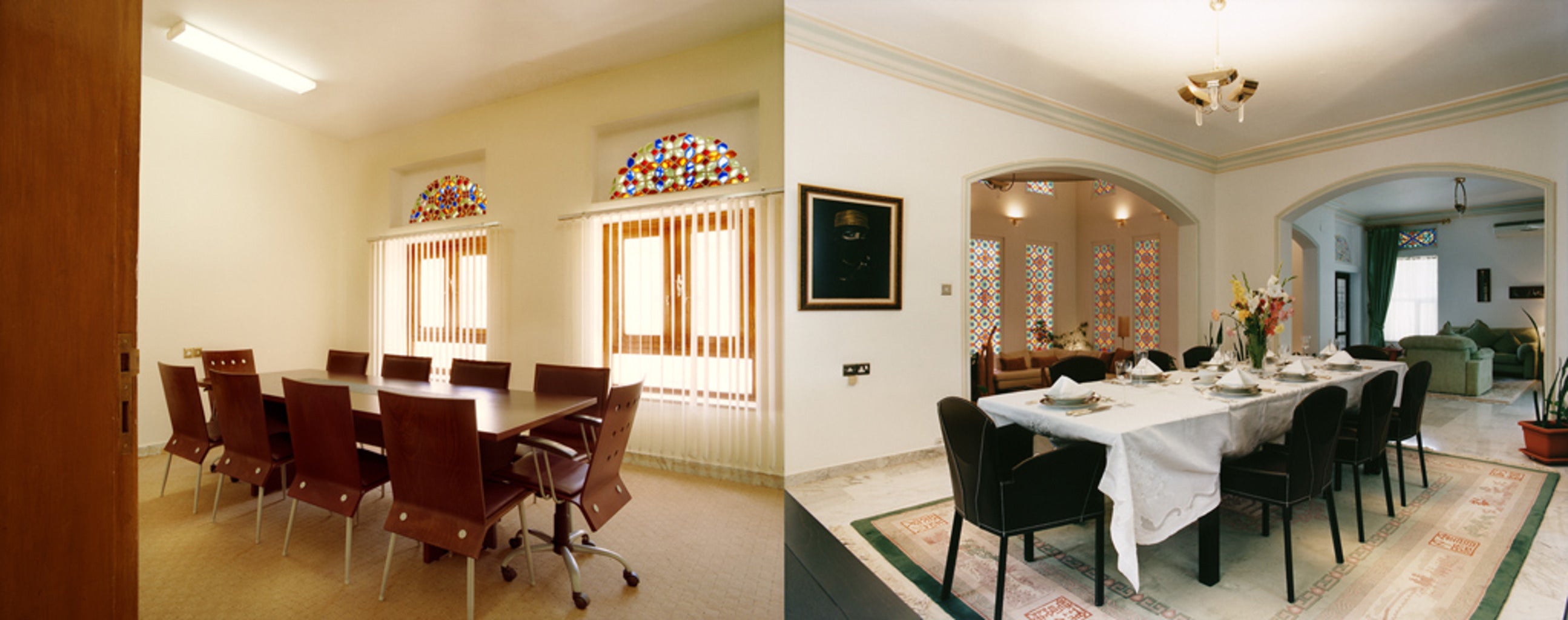
Jihad Anis Hassan Abbas
Director, Business Development Consolidated Contractors Company S.A.L.
Arab Domains
Sana’a, Yemen
15 April 2006
The nuance of positioning. Yes, body language is a language. And Hassink’s inclusion of this specific detail reflects her ability not only to find value and content in subtle details, but also to point out the linguistics of physicality. She reinforces this by presenting the boardroom and dining room images side by side as diptychs.
Director, Business Development Consolidated Contractors Company S.A.L.
Arab Domains
Sana’a, Yemen
15 April 2006
The nuance of positioning. Yes, body language is a language. And Hassink’s inclusion of this specific detail reflects her ability not only to find value and content in subtle details, but also to point out the linguistics of physicality. She reinforces this by presenting the boardroom and dining room images side by side as diptychs.


